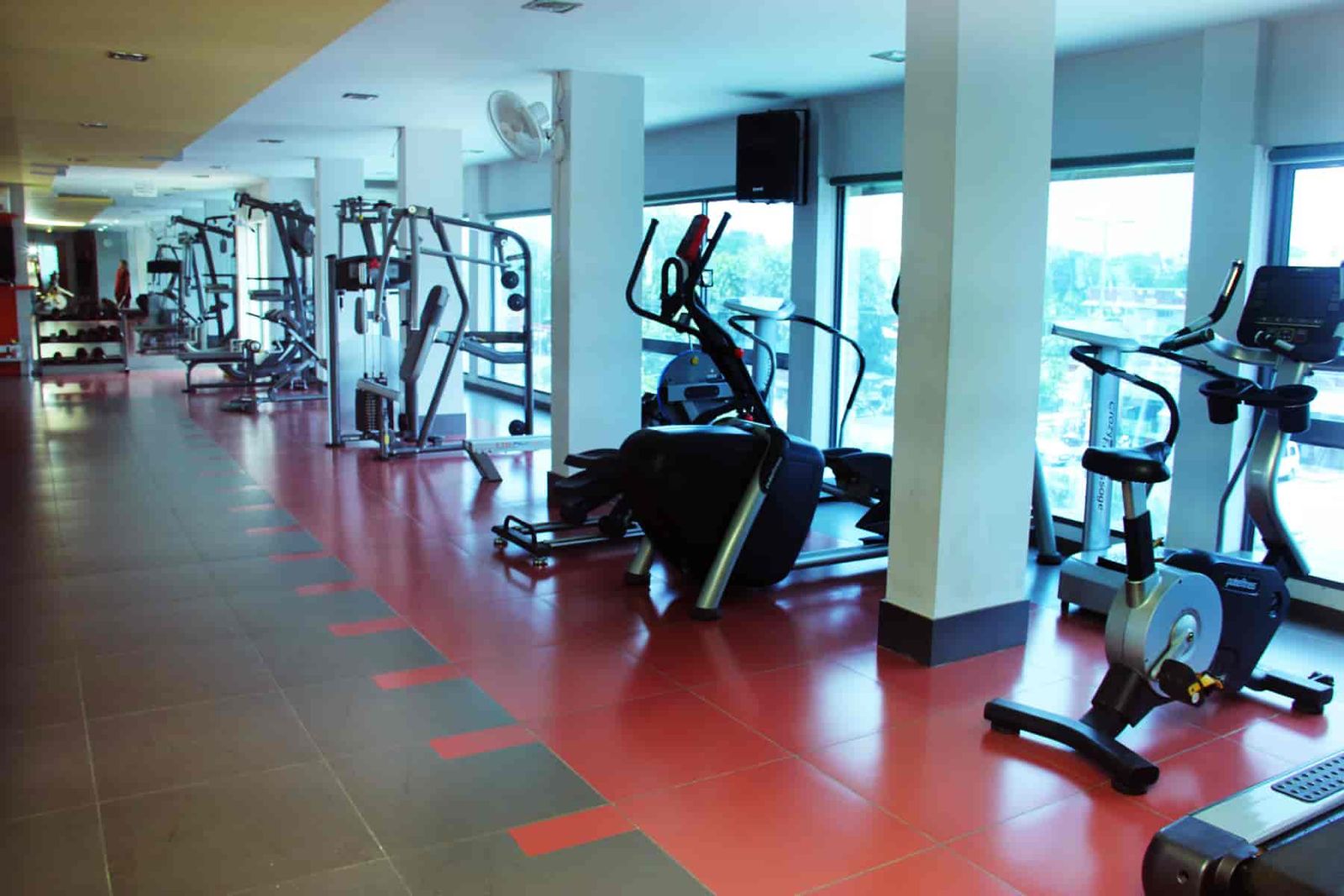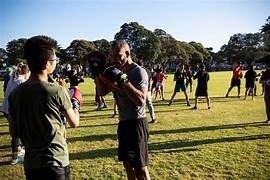
Recovery Days: Why Doing Less Can Help You Progress Faster.
In the relentless pursuit of fitness goals, rest is often overlooked, yet it is a powerful catalyst for progress. Recovery days allow muscles to repair, hormones to rebalance, and the nervous system to reset, ensuring faster gains, reduced injury risk, and improved performance. Doing less strategically is not laziness—it’s the smartest path to long-term results.
💪 Fitness Guru
54 min read · 21, Oct 2025

Introduction
In the world of fitness, we often celebrate sweat, intensity, and pushing beyond limits. The “no pain, no gain” mindset dominates workout culture, making rest days feel like wasted opportunities. However, emerging research and expert consensus tell a very different story: rest and recovery are not optional—they’re essential. Taking time to recover can be the very reason you grow stronger, faster, and more resilient.
This article delves deep into why recovery days matter, what happens physiologically during rest, how active recovery differs from complete rest, and how proper recovery strategies can transform your athletic progress. Whether you’re a competitive athlete or a weekend gym-goer, understanding the science and art of recovery could be the missing piece in your fitness journey.
1. The Science Behind Recovery: What Happens When You Rest
When you exercise, especially during strength or endurance training, you’re essentially breaking down muscle fibers and taxing your nervous system. The soreness and fatigue you feel afterward are signs that your body is undergoing microtrauma—tiny tears in muscle tissue that must be repaired.
Here’s the paradox: you don’t get stronger during your workout—you get stronger during recovery. When you rest, your body activates several biological processes:
- Muscle Protein Synthesis: The body rebuilds damaged muscle fibers, making them thicker and stronger.
- Glycogen Replenishment: The body restores depleted glycogen stores (its main energy source).
- Hormonal Rebalancing: Recovery normalizes cortisol (stress hormone) levels and boosts growth hormone and testosterone, which are crucial for muscle repair.
- Nervous System Recovery: The central nervous system (CNS), which governs muscle activation and coordination, needs rest to regain full function.
Without adequate recovery, the body can’t complete these processes, leading to plateaus, fatigue, or even regression in performance.
2. Overtraining: When More Becomes Too Much
Many fitness enthusiasts mistakenly believe that training harder and longer will yield better results. However, the body has limits. Overtraining syndrome (OTS) occurs when your training intensity or volume consistently exceeds your body’s ability to recover.
Symptoms of overtraining include:
- Persistent fatigue and muscle soreness
- Decreased strength or endurance
- Poor sleep and irritability
- Lower immunity (more frequent illness)
- Increased risk of injuries
- Lack of motivation or burnout
What’s alarming is that overtraining doesn’t always come from too many workouts—it can also come from not enough rest. Muscles, connective tissue, and your CNS all require structured downtime to adapt and thrive. Ignoring recovery can undo months of effort and cause long-term setbacks.
3. Types of Recovery: Passive vs. Active
Not all recovery looks the same. In fact, the best recovery strategies are active rather than completely passive.
Passive Recovery
This refers to total rest—no physical activity at all. It’s most effective after extremely intense sessions or competitions when the body is in deep fatigue. Passive recovery helps in severe muscle damage or illness recovery phases.
However, for most people, active recovery provides better benefits.
Active Recovery
Active recovery involves low-intensity movement that keeps blood flowing without putting stress on your muscles. Examples include:
- Walking, light cycling, or swimming
- Yoga or stretching
- Foam rolling and mobility work
These activities improve circulation, help remove metabolic waste like lactic acid, and deliver oxygen and nutrients to the muscles. Studies show that athletes who engage in active recovery experience faster performance restoration and less soreness than those who remain sedentary.
4. The Role of Sleep in Recovery
Sleep is the most powerful and underappreciated recovery tool available. During deep sleep, the body releases growth hormone, which accelerates muscle repair, tissue regeneration, and fat metabolism.
A lack of quality sleep (less than 7 hours per night) can:
- Impair muscle recovery
- Reduce glycogen storage
- Lower testosterone levels
- Increase cortisol production
- Weaken cognitive focus and motivation
Elite athletes like LeBron James and Roger Federer reportedly sleep 9–10 hours per night, recognizing that rest is a performance enhancer, not a weakness. For regular exercisers, ensuring consistent, high-quality sleep can be the difference between steady progress and stagnation.
5. Nutrition: Fueling the Recovery Process
Recovery isn’t just about inactivity—it’s about giving your body what it needs to rebuild. Nutrition plays a key role in this phase.
Protein:
Post-workout, your muscles are primed for repair. Consuming 20–40 grams of protein within two hours of exercise stimulates muscle protein synthesis.
Carbohydrates:
To replenish glycogen, carbohydrates should be consumed alongside protein, especially after endurance workouts. A ratio of 3:1 carbs to protein is often recommended for optimal recovery.
Hydration:
Even mild dehydration slows down the repair process. Electrolytes like sodium, potassium, and magnesium are essential for muscle contraction and nerve function.
Micronutrients:
Vitamins C, D, and B-complex, along with minerals like zinc and iron, play crucial roles in tissue healing and energy metabolism.
Eating a balanced, nutrient-rich diet supports faster recovery and sustainable performance growth.
6. The Mental Side of Recovery
Physical recovery is only half the story. Mental fatigue can also hinder performance just as much as physical exhaustion. Athletes who neglect mental recovery experience motivation drops, focus loss, and burnout.
Strategies for mental recovery include:
- Mindfulness and meditation: Reduces stress and anxiety levels.
- Digital detox: Limiting screen time improves sleep quality and focus.
- Hobbies and relaxation: Engaging in non-fitness activities restores balance.
Recovery is not just for muscles—it’s for the mind, too. Taking time to relax can make your return to training more focused and productive.
7. The Myth of “No Rest Days”
Social media fitness culture often glorifies “grind” mentality—training seven days a week with no rest. This might sound impressive, but physiologically, it’s counterproductive. Muscles and joints need periodic breaks to prevent overuse injuries such as tendinitis, stress fractures, and joint inflammation.
Even professional athletes follow periodized training plans with scheduled rest and deload weeks to ensure sustainable progress. Skipping rest days doesn’t make you stronger—it makes you weaker in the long run.
8. How to Plan Effective Recovery Days
An intelligent training program balances stress (training) with recovery (adaptation). Here’s how to build recovery into your schedule:
- Follow a 3:1 Cycle: Train intensely for three days, then take one recovery day.
- Listen to Your Body: Rest when you experience persistent soreness, fatigue, or irritability.
- Prioritize Sleep: Aim for 7–9 hours nightly.
- Hydrate and Eat Well: Support recovery with nutrient-rich foods.
- Incorporate Active Recovery: Light stretching, yoga, or walking keeps muscles engaged.
- Massage and Foam Rolling: Reduces tightness and promotes blood flow.
These steps ensure that recovery is not an afterthought—but an integral part of your progress.
9. Real-World Examples: How Recovery Boosts Performance
- Usain Bolt, one of the greatest sprinters of all time, emphasized rest as a cornerstone of his success. His coach, Glen Mills, often adjusted training intensity based on Bolt’s recovery status.
- CrossFit athletes incorporate mobility days to prevent burnout during high-volume training weeks.
- Marathon runners use recovery runs (light jogs) to stimulate blood flow without adding stress, accelerating healing between intense sessions.
These examples highlight that rest isn’t laziness—it’s professionalism.
10. Listening to Your Body: The Ultimate Recovery Skill
Every body is unique. What works for one athlete may not work for another. Learning to interpret your body’s signals—fatigue, soreness, mood swings, sleep quality—is essential for optimizing recovery.
If you feel more tired after rest days, you may be under-recovering. If your performance plateaus or declines despite hard training, recovery—not intensity—might be the missing key.
Adapting recovery protocols based on feedback is the hallmark of smart, sustainable fitness.
When it comes to fitness and athletic performance, one of the most misunderstood and often neglected aspects is the importance of recovery, which is the process that allows the body to repair, adapt, and grow stronger after periods of intense physical exertion, and yet many people, from casual gym-goers to dedicated athletes, often fall into the trap of believing that continuous training without pause is the key to success, failing to realize that the human body is not an endless machine and that each workout, no matter how carefully designed or moderately intense, imposes microscopic stress on muscles, tendons, ligaments, and even the nervous system, and these stresses, while necessary to stimulate growth and adaptation, also necessitate a period of rest to allow for biological processes such as muscle protein synthesis, glycogen replenishment, hormonal balance, and central nervous system recovery to take place, and skipping or shortening these recovery periods can lead to diminished returns, increased risk of overuse injuries, chronic fatigue, mental burnout, and hormonal imbalances that not only hinder performance but may also compromise long-term health; during recovery days, muscles undergo repair as tiny microtears sustained during strength training or high-intensity workouts are rebuilt and strengthened, which is facilitated by adequate protein intake and other essential nutrients, while glycogen stores, which are depleted during sustained exertion, are replenished through proper nutrition, and the hormonal system, including the delicate balance between anabolic hormones such as testosterone and growth hormone, and catabolic hormones like cortisol, is restored, allowing the body to maintain an optimal environment for repair and growth, and this process is further enhanced by sleep, which is often undervalued despite being one of the most critical recovery tools available, as deep sleep stages trigger significant release of growth hormone, improve neural efficiency, and allow mental and emotional fatigue to dissipate, which in turn improves motivation, focus, and overall quality of training; moreover, recovery does not always mean complete inactivity; active recovery, such as light cardio, yoga, stretching, or mobility exercises, helps improve blood circulation, reduces lactic acid buildup, enhances joint flexibility, and promotes mental relaxation, all of which contribute to faster healing and prepare the body for subsequent training sessions, whereas passive recovery is essential after periods of extreme fatigue, injury, or overtraining, emphasizing that recovery strategies must be adapted to the individual’s workload, intensity, and personal physiological response; understanding the psychological component of recovery is equally important, as mental stress, fatigue, and overcommitment can impair physical recovery, so strategies such as mindfulness, meditation, leisure activities, and limiting exposure to stressors including excessive screen time can significantly enhance both physical and cognitive recuperation; overtraining, which results from consistently training beyond the body’s ability to recover, exemplifies the consequences of neglecting recovery, manifesting in symptoms such as chronic soreness, decreased performance, irritability, sleep disturbances, and heightened susceptibility to illness and injury, demonstrating that more training does not automatically equate to better results, and that structured rest periods, deload weeks, and strategically scheduled lighter sessions are crucial for sustainable progress; real-world examples, including elite athletes like Usain Bolt, who meticulously incorporate rest and recovery into their training regimen, or CrossFit competitors who prioritize mobility and active recovery, illustrate that even at the highest levels of human performance, rest is not optional but an essential component of growth; additionally, nutrition plays a central role in recovery, with protein, carbohydrates, healthy fats, and micronutrients supporting muscle repair, glycogen replenishment, and overall physiological balance, while hydration maintains cellular function, aids toxin removal, and ensures optimal nutrient transport, highlighting that recovery is a multifaceted process that integrates physical, nutritional, and psychological elements; it is also essential to recognize that the optimal frequency, type, and intensity of recovery vary between individuals depending on factors such as age, training history, fitness level, and the specific demands of their sport or exercise regimen, and therefore listening to one’s body—interpreting signs like persistent fatigue, soreness, decreased motivation, or poor sleep quality—is critical to preventing overtraining and ensuring continuous improvement; recovery also encompasses preventive strategies, such as foam rolling, massage, stretching, and joint mobility work, which not only accelerate healing but also prevent injuries and maintain long-term musculoskeletal health; scientifically, studies show that athletes who strategically incorporate recovery days into their routine experience faster improvements in strength, endurance, and overall performance, whereas those who neglect recovery plateau or even regress, proving that intelligent training is a balance between stress and restoration, and that performance is a product of the cycle: stress, rest, adaptation, rather than relentless activity; beyond the physiological benefits, recovery days also foster mental clarity, motivation, and enjoyment of training, reducing the risk of burnout and promoting long-term adherence to a fitness program, emphasizing that taking a break is not laziness, but a proactive approach to maximize results; ultimately, embracing recovery as an integral part of your fitness plan empowers you to train smarter, optimize performance, prevent injuries, and support sustainable health, proving that sometimes doing less is the most effective way to achieve more, and that by strategically resting, nourishing, and recharging both body and mind, you create the foundation for accelerated progress, greater strength, enhanced endurance, and overall well-being, solidifying recovery days as an indispensable tool in any serious athlete’s or fitness enthusiast’s regimen, underscoring that in the pursuit of excellence, knowing when to pause is as important as knowing how to push, and mastering this balance is the key to transforming effort into tangible, long-term gains.
In the pursuit of fitness, strength, and overall athletic performance, one of the most overlooked yet fundamentally important components is the practice of recovery, which, despite being widely misunderstood as simply taking a break or doing nothing, is actually the period during which the body undergoes critical physiological, neurological, and psychological processes that enable muscles, connective tissues, and the central nervous system to repair, adapt, and ultimately grow stronger, and while many fitness enthusiasts, motivated by the “no pain, no gain” mantra, often push themselves to train every day with maximum intensity, failing to recognize that the human body has finite limits and requires structured periods of rest to process the stress imposed by exercise, this period of recovery is not a passive state but a highly active and dynamic process in which muscle protein synthesis occurs to rebuild microscopic tears caused by resistance training, glycogen stores are replenished to restore energy for future exertion, and hormones such as cortisol, testosterone, and growth hormone are rebalanced to maintain an environment conducive to repair and growth, while the central nervous system, which becomes fatigued during strenuous or high-volume training, is given time to recalibrate, allowing for optimal neuromuscular coordination, strength, and endurance in subsequent workouts, and yet many individuals misinterpret soreness or fatigue as weakness or inefficiency, pushing through the discomfort instead of recognizing it as a signal that recovery is needed, which can lead to overtraining syndrome, characterized by persistent fatigue, irritability, disrupted sleep, reduced immunity, and a decline in performance that not only hinders progress but can also result in injuries ranging from stress fractures to tendonitis, thereby highlighting that overtraining is less about lack of motivation and more about neglecting the body’s natural need for repair; recovery is multifaceted and encompasses both passive and active forms, with passive recovery involving complete rest, which is especially important following extremely intense workouts or competitions to allow deep healing, and active recovery, which incorporates low-intensity activities such as walking, light cycling, swimming, yoga, or dynamic stretching that promote circulation, reduce lactic acid buildup, improve joint mobility, and accelerate nutrient delivery to muscles, all of which enhance the repair process while also maintaining movement patterns and flexibility, illustrating that “doing less” does not equate to inactivity, but rather to intelligent modulation of effort to maximize long-term gains; sleep plays an equally indispensable role in recovery, as during deep sleep stages, growth hormone is released in significant quantities, facilitating tissue repair, muscle growth, and fat metabolism, while simultaneously allowing the brain to consolidate memories, regulate stress hormones, and restore cognitive function, and insufficient sleep, which is alarmingly common in both athletes and recreational exercisers, has been linked to impaired performance, reduced glycogen storage, slower reaction times, hormonal imbalances, and even increased risk of chronic diseases, demonstrating that recovery is not solely a physical necessity but also a neurological and endocrine imperative; nutrition, too, acts as a cornerstone of effective recovery, as adequate intake of high-quality protein provides the essential amino acids required for muscle repair, while carbohydrates replenish glycogen stores and support energy availability, and healthy fats and micronutrients such as vitamins C, D, zinc, and magnesium facilitate anti-inflammatory processes, hormone synthesis, and overall cellular function, and without proper nutrition, the benefits of rest are blunted, emphasizing that recovery is an integrated approach combining rest, movement, sleep, and diet; psychological recovery is another dimension that is often underestimated, as mental fatigue, stress, and burnout can compromise motivation, focus, and performance, and strategies such as mindfulness, meditation, leisure activities, social interaction, and limiting exposure to digital stressors can enhance mental restoration, reduce perceived exertion in workouts, and improve adherence to long-term training plans; real-world evidence from elite athletes underscores the critical nature of recovery, with examples such as Usain Bolt, whose training schedules included strategically placed rest days to allow optimal muscle repair and nervous system recalibration, and professional CrossFit athletes who integrate mobility days, stretching, and light active sessions to prevent overuse injuries, all of which illustrate that even at the highest levels of human performance, rest is not optional but essential; furthermore, structured recovery supports injury prevention by reducing overuse, improving joint health, enhancing circulation, and maintaining flexibility, and it also allows athletes to evaluate performance feedback, adjust training intensity, and address underlying weaknesses, creating a cycle of stress, rest, and adaptation that forms the foundation of sustainable progression; recovery days, therefore, are not a sign of laziness but a strategic tool for smarter training, allowing the body to absorb the training stimulus, consolidate strength and endurance gains, and prepare both physically and mentally for subsequent sessions, and the failure to incorporate recovery leads to diminished returns, stagnation, increased risk of injury, and psychological burnout, which can derail fitness goals despite consistent effort; the timing, duration, and type of recovery should be individualized, taking into account factors such as age, training intensity, workout volume, fitness level, and overall lifestyle stressors, and monitoring subjective signs such as persistent soreness, fatigue, irritability, sleep quality, and mood can guide when and how recovery is implemented, ensuring optimal adaptation; in conclusion, recovery is a sophisticated, indispensable process that integrates physiology, nutrition, sleep, and psychology, and by understanding and respecting its role, individuals can enhance performance, prevent injuries, maintain motivation, and accelerate long-term progress, proving that sometimes, the most effective way to move forward in training is to strategically slow down, listen to the body, and embrace rest as an active, productive, and essential component of fitness, and by doing so, one transforms effort into measurable, sustainable results, demonstrating that in the art and science of training, knowing when to pause is as important as knowing how to push, and mastery of recovery is ultimately the key to achieving consistent, long-term success in any fitness journey.
Conclusion
Recovery is not the opposite of training—it’s the completion of training. Every time you rest, your body and mind are busy rebuilding, recharging, and preparing for new challenges. Overlooking recovery slows progress, increases injury risk, and leads to burnout.
The most successful athletes understand that progress is a cycle: train, recover, adapt, repeat. Incorporating structured rest, proper nutrition, mental relaxation, and sleep transforms your fitness results.
In essence, doing less can indeed help you do more. The key is not to train harder—but to train smarter.
Q&A Section
Q1: Why are recovery days important for muscle growth?
Ans: Recovery days allow muscle fibers to repair and rebuild after being broken down during workouts. This process, called muscle protein synthesis, leads to strength and growth improvements.
Q2: How often should I take a recovery day?
Ans: Most people benefit from at least one full recovery day per week, though frequency depends on workout intensity, duration, and individual fitness levels.
Q3: What’s the difference between active and passive recovery?
Ans: Active recovery involves light activities like walking or stretching that enhance circulation and reduce soreness, while passive recovery is complete rest—best used after intense training or injury.
Q4: Can too much training without rest cause harm?
Ans: Yes. Overtraining can lead to fatigue, decreased performance, injury, hormonal imbalance, and even immune suppression.
Q5: How does sleep contribute to recovery?
Ans: During deep sleep, the body releases growth hormone, repairs muscle tissue, restores energy stores, and balances hormones—all essential for effective recovery.
Similar Articles
Find more relatable content in similar Articles

Minimalist Fitness Gear: Do You Really Need a Gym?..
In an era dominated by high-te.. Read More

Urban Fitness Adventures: Turning Cities into Gyms...
"Discover how urban environmen.. Read More

Tribal Fitness: Learning from Indigenous Movement Practices...
Long before modern gyms and fi.. Read More

Calisthenics Mastery: Control, Balance, and Body Awareness...
Calisthenics is the art of mas.. Read More
© 2024 Copyrights by rFitness. All Rights Reserved.